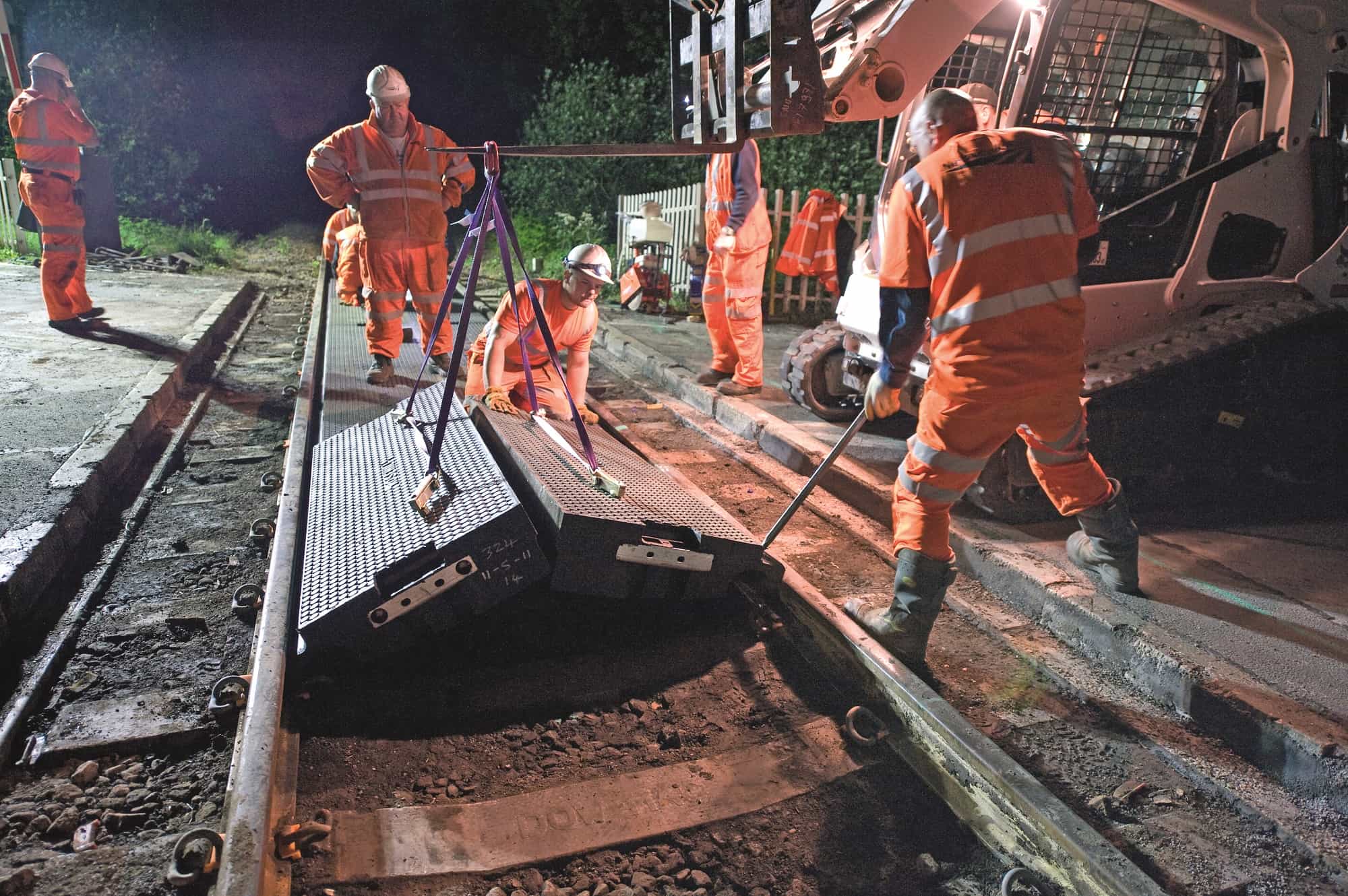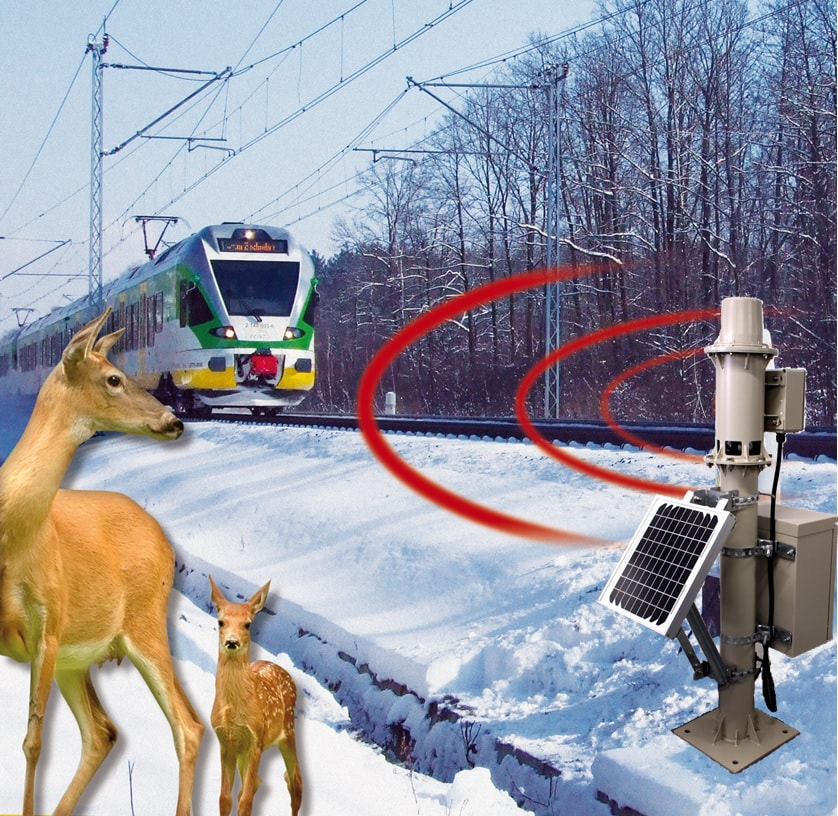- TOP
- Corporate Information
- Project Story
- Support the Railway Infrastructure that Sustains Japan with Cutting-Edge Knowledge and Technology
Infrastructure Business Evolved on Its Own
Communication infrastructures such as optical fiber, 5G, and IoT are becoming common. So too are the social infrastructures of railways, electric power, and roads. We, the AIF Team, are a technostructure that aims to develop a safer, stronger, and sustainable infrastructure and support building and maintaining such infrastructure with cutting-edge knowledge and technology. One of the products that our team is handling is measurement equipment for the telecommunication industry used by telecommunication companies and construction companies. This is to search for a type of problem when a failure occurs with a communication cable. Our team also handles testers that are used to check whether or not communication cables attain transmitting speed according to the standards.
While the AIF Team delivers such equipment to leading telecommunication companies and railway companies, there are many competitors. Therefore, we believe that it is important to show our competitive edge by collecting overseas advanced product information as quickly as possible and offering proposals.
Meanwhile, Japan’s infrastructure business tended to be reluctant to incorporate foreign products as it evolved in unique ways, though it had been pointed out that the challenge was to improve development capabilities. However, it cannot be solved in an outdated, unchanged way of thinking. Thus, leading telecommunication companies and railway companies have begun to focus on foreign technologies in recent years. Now, there are companies that own high technological capabilities for infrastructure in China, North America, and Europe. They are looking for a foothold in Japan and trying to expand their market share through collaboration. The AIF Team has decided to use this situation as a tailwind to create a future vision that creates a win-win situation for all parties, Japanese infrastructure-related companies, overseas manufacturers, and Harada Corporation.
Ensuring Safety and Reducing Costs at Station Construction Sites
The product that triggered the AIF Team to enter the railway business was a construction passage (Rodded Panel). It was the product that the AIF Team paid attention to at the industry’s largest trade show in Germany in 2012. The Rodded Panel is a high-strength rubber panel for construction passages. When station improvement projects are carried out, any step could lead to a serious accident, such as the overturning of a construction vehicle. The safety of the stage is secured by laying out these panels to level the stage. Furthermore, cost reduction and laborsaving can be achieved because the panels are easy to install and remove. There must be a need for this product in Japan, too. This is how we thought. When we brought this product to a leading railway company, we received a positive response that the company wanted to use those for large-scale construction work, which would begin in a year and a half. However, the panels could not be used in situ in Japan because they were produced in compliance with European Railway Standards. They needed to be adapted to the dimensions of Japanese rails and sleepers.
It had long been recognized by the railway industry in Japan that there were overseas manufacturers that dealt with such panels. However, even if we asked such manufacturers to change their specifications to meet Japan’s standards, they would respond, “Japan must conform to the global standards.” Therefore, we were unable to introduce those products.
How should we overcome this challenge? The manufacturer that the AIF Team focused on had the second largest market share in the world at the time. While explaining to the manufacturer, which fell behind the top maker, the possibilities of expanding its market share in Japan by producing products that complied with Japanese standards, we proceeded with the negotiations. As we started with no knowledge of the industry or products, negotiations with the manufacturer and domestic customers were full of unknowns. However, we learned gradually and steadily took steps forward with the cooperation of the manufacturer and our customers. Finally, panels that complied with Japanese standards were completed. The construction was finished successfully. Now, our results have been communicated to railway companies, which were troubled with the decrease in on-site workers. We receive more inquiries from those companies, and the introduction of the Rodded Panel is in progress.

Prevent Train Delays by Avoiding Minor Collisions with Animals
The success of the Rodded Panel led the AIF Team to further promote the railway business. We at the team conducted interviews with railway business providers to ask about their issues. Then, we learned that trains were frequently delayed due to deer entering the train tracks and causing minor collisions.
Seeking the latest information, we again visited a railway-related trade show in Germany. Among many animal damage control products, we focused on a product by a Polish manufacturer. National forests in Poland cover approximately 7 million hectares and are said to be the largest in Europe. Many elk and reindeer live in the forests, and Poland faces similar problems as Japan.
When an animal senses danger, it makes a special cry to communicate this to its herd mates. This is called an alarm cry. This product is a device that exactly mimics the alarm cry. The device, installed along the tracks, induces deer to run away by playing the warning cry one minute before a train passes. What makes this device unique is that it applies a mechanism in nature. It is not only deer that make an alarm cry. In nature, small animals, such as rabbits and squirrels, sense the danger first. Then, animals such as boars that heard their alarm cry would become alert, and eventually deer sense the danger, too. This device reproduces the story of the natural world well. The cry from the device was developed in collaboration with a university in Poland. In other words, it has a scientific basis as well. We were attracted to the concept of coexistence with deer as most systems generally take an approach to prevent deer from entering the tracks by building a fence. We, the AIF Team, thought that the device had value in coexisting with nature rather than antagonizing it.
However, we had challenges, too. We needed to improve various aspects of the product, including the installation location, the method of installation, and the ensuring of a power source as it would be installed in the mountains. One of the most challenging issues was to prove the effectiveness of the animal’s cry. Without a clear explanation, we could not introduce this product to our customers self-confidently. We asked research institutes to conduct experiments over and over again repeatedly in order to verify the best location for installing the device, the method for installation, and its effects. Finally, we managed to complete the project in a year.
The product was named Shika-hana-rail (meaning “Deer Moving Away from Rail” in Japanese). Though the name sounds like a pun, the product has been better received than we expected. The conventional method of covering the tracks with bars and fences incurs extraordinary costs. Regular maintenance for the bars and fences is also required. There are cases where even the installation is difficult in mountainous areas. On the other hand, the Shika-hana-rail curbs costs and is highly effective. Our deer control with a completely new concept has been well received, and railway companies are making specific inquiries and starting to introduce the device.

New Form of Train Operation Control – New Possibilities Identified through It
Train operation control in Japan is very complicated. However, in terms of how many cars are operating between stations, train operation is surprisingly controlled in an analogous manner. For example, when an accident at a railroad crossing occurs, it may take some time to comprehend which train caused the accident.
The train operation control system (referred to below as DAS System) that the AIF Team has been dealing with since 2015 was developed by a British manufacturer.
The system enables us to acquire the length and location of the trains by connecting the DAS System to optical fiber for communication laid along the routes. In addition, its sensor algorithm can detect rockfalls and landslides. Various natural disasters occur in Japan. Therefore, this system, which detects those as early as possible, has the advantage of allowing us to implement the initial action faster and more accurately.
Furthermore, we have seen the potential of the DAS System as an earthquake observation system. As the manufacturer that developed the DAS System was engaged in seismic applications as well, we introduced this system to a client with experience in the field of seismic detection and received a positive response about the high effectiveness of the system. The AIF Team hopes to cause a paradigm shift in the field of seismic detection, which has applied the same observation principles for 100 years, with its proposals of an innovative observation method.
Desired Technologies and Products from around the World
Infrastructure is an essential element to sustain Japan. Times have changed from the high economic growth period to the declining labor force of today when labor saving and automation are indispensable. The AIF Team will ascertain overseas solutions with flexible thinking and our original perspective in order to offer technologies and products that Japan now demands in the best possible way.





